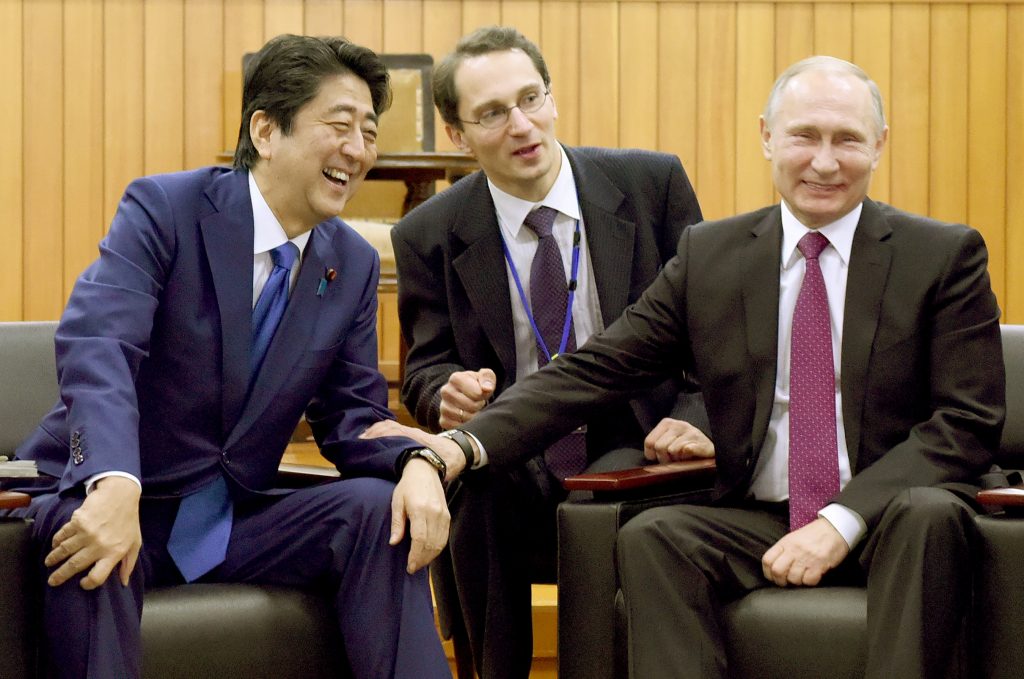By Laurenz Gehrke and Allison Fedirka
Russian and Japanese officials are preparing for March 14 talks in Tokyo to discuss the economic development of the Kuril Islands. Territorial claims over the archipelago have been a subject of dispute between Russia and Japan since the 19th century. The islands have remained under Russia’s control since 1945, when the Soviet Union took them from Japan. In the lead-up to this month’s meeting, Russia again asserted its authority over the islands. On Feb. 22, Russia’s defense minister said Moscow plans to deploy an army division this year to the islands. However, the islands’ ownership should not be thought of in the context of a simple territorial claim, but rather as one component of Russia’s greater geopolitical interests in the Pacific.
Today, the Russian Federation is primarily portrayed in the media and international affairs as a European power. This is not entirely wrong given Moscow, the country’s geopolitical epicenter, is only a couple hundred miles from European borders. However, the double-headed eagle on its coat of arms reminds us that Moscow must constantly look both west and east to protect its national interests. Russian territory is expansive, and Moscow cannot neglect its eastern borders despite the challenges posed by vast distances and inhospitable terrain. Russia’s strategic interests in the Far East include oil deposits, access to Asian markets and proximity to the United States and its naval forces. Russia historically has maintained an interest in accessing more southerly, warm-water ports in the peninsulas and points of power projection to protect its border.
Russian President Vladimir Putin, right, chats with Japanese Prime Minister Shinzo Abe, left, during a visit to the Kodokan judo hall in Tokyo, on Dec. 16, 2016.
Currently Russia’s southernmost point to project power in East Asia is Vladivostok, home to its Pacific fleet. From there it can access the Sea of Japan. To reach the rest of Asia, Russia must go around Japan or face a potential choke point by passing through the waters bordered by Japan and South Korea. Free access to maritime routes through the East and South China seas is limited. Under the backdrop of the Cold War, in 1979, the Soviet Union and Vietnam signed a 25-year contract for the former to have a military base in Cam Ranh, Vietnam. This base gave Russia a southern point in the seas to help project power north. The contract expired in 2004, but in 2014, Russia resumed aircraft operations out of Cam Ranh and has been rumored to be exploring building on this access with Vietnam officials.
In recent years, Russia has put resources toward building up its Pacific fleet, and with good reason. Russia has sought to create a buffer zone along its southern Pacific border, particularly in the present-day Primorsky and Khabarovsk regions, whose land borders are shared with China and North Korea. The greater Manchuria region (including outer and inner) and particularly the Liaodong and Korean peninsulas have historically been a flashpoint in East Asia. This flashpoint is marked by the convergence of competing interests from China, Russia and Japan. These competing desires to form and control a buffer region that would help marginalize rival powers have sparked multiple military conflicts in the region over the last 130 years, with control changing hands multiple times. The Korean Peninsula sits between China and Japan and served as a buffer between the two countries. As a result, both Tokyo and Beijing have sought to maintain influence on the peninsula as a means of protecting their national interests. The First Sino-Japanese War (1894-95) was fought over this issue and saw Japanese forces overpower Chinese forces on the Korean Peninsula and in Manchuria.
The result of the Sino-Japanese War ultimately led to the ensuing Russo-Japanese War (1904-05). Immediately after the First Sino-Japanese War, Japan received control over the Liaodong Peninsula by treaty. This did not sit well with the Russians. Japanese control of the area could rival Russian power in its domestic territory and pose a risk to railway construction that would connect the east with Moscow and warm-water ports. Instead of being across the sea, Japan was on Russia’s doorstep in a land-based stronghold from which to project power on mainland East Asia.
Russia successfully garnered support from France and Germany to pressure Japan into giving Russia control over a large part of Manchuria, which included the Liaodong Peninsula. Once again, in 1904, Japan engaged in war, this time with Russia over influence and control over greater Manchuria. Japan obliterated Russia’s navy and decisively defeated Russia, which was a surprise for Moscow. Russia’s fears of a powerful eastern neighbor in Japan were confirmed.
In the following years, Russia’s preoccupation with the Bolshevik Revolution and World War I opened space for Japan to invade Manchuria in 1931 and engage China in a second war. This conflict eventually merged into World War II. After Germany’s surrender in 1945, Soviet forces were free to engage on the Pacific front. The Soviet Union ousted Japan from parts of Mongolia and North Korea. For much of the remainder of the 20th century, Russia remained the dominant power in this region.
However, the fall of the Soviet Union in 1991 resulted in a restructuring of the world’s geopolitical system in which the U.S. emerged as a global hegemon. China has returned to its historical status as a strong regional power, particularly in economic terms. That said, its export-oriented model is no longer sustainable and has laid the groundwork for domestic conflict in the country. China also has ambitious plans to develop a stronger military, but nothing that could compete with the United States. This, however, does not stop Beijing from pushing its territorial envelope as far as it can.
The U.S. maintains its post-World War II role of protecting free passage among Pacific trade routes as world commerce in the Pacific continues to grow. Japan has recovered from World War II and has started laying the groundwork for building its own military and defense force. This budding ability to protect its national security, provide high levels of wealth with relatively small gaps and use technology to overcome its demographics problem will enable Japan to emerge as the premier regional power in Asia in approximately the next two decades.
What emerges from all of this is an image of Russia as both eager and weak. Russia cannot afford to ignore these developments especially given its history with Japan. It needs to protect its Pacific interests by building its fleet and developing its Far East economy. However, Russia is in the midst of a political and economic crisis. The future of Ukraine, whose existence as a buffer state is essential to Russia’s survival, is in flux. Severe economic problems have started breeding civil unrest in various regions. So while not heralding a return to former glory, Russia’s engagement in the Pacific is an attempt to follow its geopolitical imperative in the region within the confines of more pressing geopolitical constraints.









